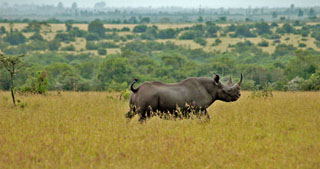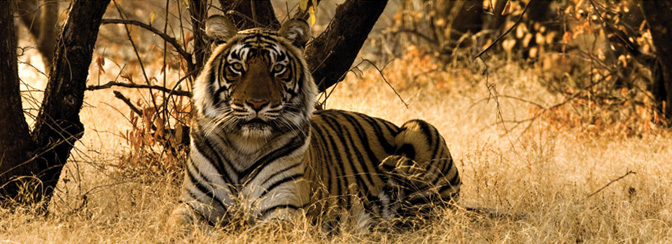Earlier this month, Peruvian president Ollanta Humala announced plans for Peru to open a new airport with closer access to the ancient ruins of Machu Picchu. This $US 460 million dollar project, reported on by BBC News, aims to drastically improve international access to Peru’s most visited tourist attraction as well as create more jobs for the surrounding community. The closest airport in Cusco is generally too small to accommodate large planes or a high volume of daily flights, and the planned airport in Chinchero, a town about 20 minutes outside of Cusco, aims to improve on these limitations. The project’s first step will be to begin expropriating large lots of land around Chinchero.
elias
Recent Posts
 On Kenya camping tours, you may spy one of 700 eastern black rhinos left in the wild, an elephant is not too far off, and a small herd of mooing cattle wanders into your field of vision as you snap the perfect photo of a grazing zebra. There is one place in Kenya where the cows are not out of place, and in fact are welcomed into the environment. This week we’d like to feature a basecamp in Kenya we all get very excited about, Ol Pejeta. Though it is more of a wildlife conservancy, Ol Pejeta is home to a number of lodges and camps, all run by the non-profit organization.
On Kenya camping tours, you may spy one of 700 eastern black rhinos left in the wild, an elephant is not too far off, and a small herd of mooing cattle wanders into your field of vision as you snap the perfect photo of a grazing zebra. There is one place in Kenya where the cows are not out of place, and in fact are welcomed into the environment. This week we’d like to feature a basecamp in Kenya we all get very excited about, Ol Pejeta. Though it is more of a wildlife conservancy, Ol Pejeta is home to a number of lodges and camps, all run by the non-profit organization.
 At Global Basecamps, we don’t blink when we call ourselves travel specialists; we are well-traveled all around the world, and consider ourselves real experts on our featured destinations. But our commitment to extreme local knowledge and unparalleled customer service keeps our “Featured Destination” list at a manageable fifteen countries, until now. Global Basecamps has spent years planning successful, cultural, exciting and unique trips to Argentina.
At Global Basecamps, we don’t blink when we call ourselves travel specialists; we are well-traveled all around the world, and consider ourselves real experts on our featured destinations. But our commitment to extreme local knowledge and unparalleled customer service keeps our “Featured Destination” list at a manageable fifteen countries, until now. Global Basecamps has spent years planning successful, cultural, exciting and unique trips to Argentina.

On July 25th, 2012, CNN reported that the Supreme Court of India placed a temporary ban on “tiger tourism” in India. This has caused quite a stir in the travel industry, causing travelers to question if their presence is beneficial to tigers, or is impeding their ability to thrive in their natural environment. The ban was issued after a local environmentalist reported his findings that ecotourism was harming the tigers’ environment and breeding grounds. Specifically, the environmentalist reported that resorts and shops had been constructed in reserves without official permission.
 The news broke a few weeks ago, but it will always be relevant. Lonesome George, the world’s last Pinto Island Tortoise and a recognized symbol of the Galapagos, died on June 24th, 2012. If you have ever been to the Galapagos Islands, there is a good chance you saw him. Discovered in 1971, he grew slower and more lackadaisical as the years came and went, but he was still a wonder. The last of his species, he was a living reminder of the dangers that accompany a human presence.
The news broke a few weeks ago, but it will always be relevant. Lonesome George, the world’s last Pinto Island Tortoise and a recognized symbol of the Galapagos, died on June 24th, 2012. If you have ever been to the Galapagos Islands, there is a good chance you saw him. Discovered in 1971, he grew slower and more lackadaisical as the years came and went, but he was still a wonder. The last of his species, he was a living reminder of the dangers that accompany a human presence.
We’d like to take this week to acknowledge the species of the Galapagos that are still in critical danger of extinction. According to the Galapagos Conservancy, we know of thirteen vertebrate species that are now extinct, and of those, humans have witnessed seven of them cross the threshold into non-existence.












